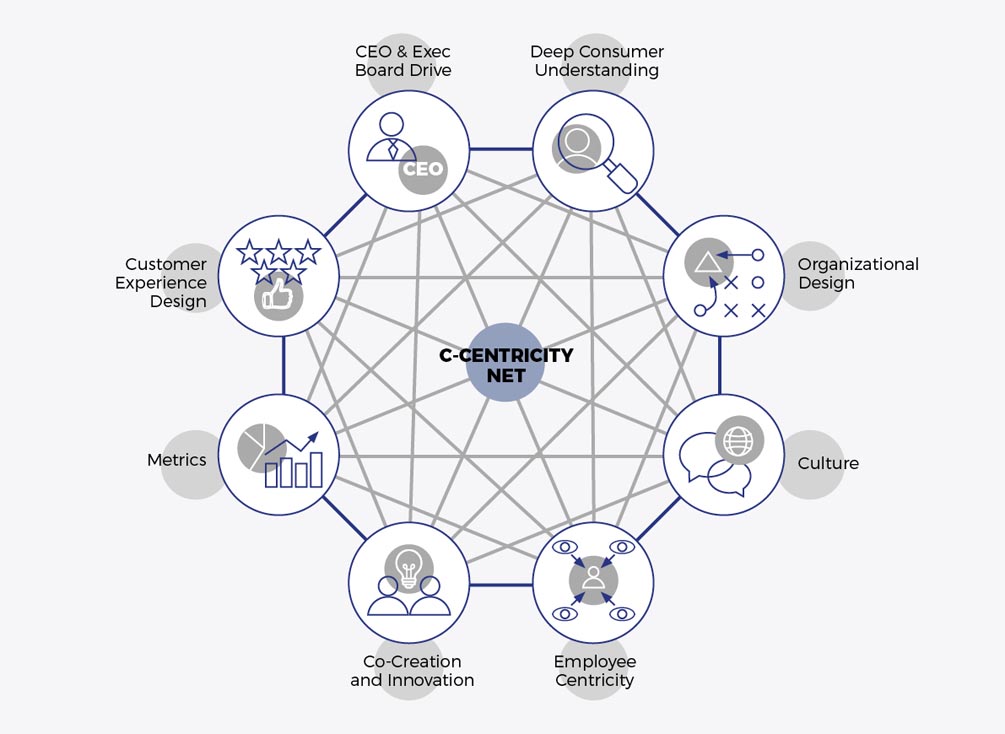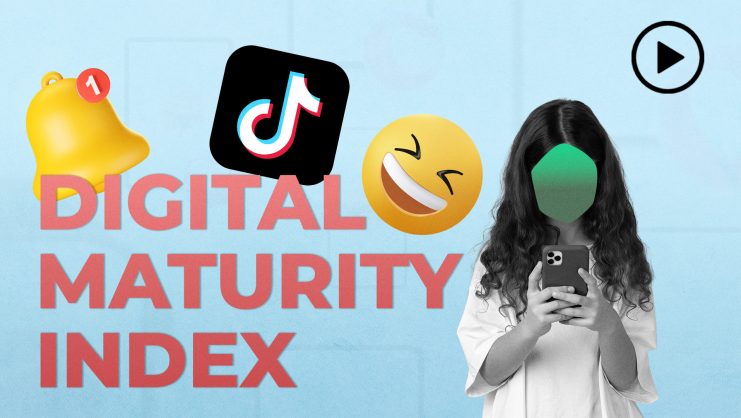Attempts to define the concept of customer centricity date back to Peter Drucker’s observation, in 1965, that businesses rely on customers to innovate and prosper. In recent years, we have seen the emergence of Amazon, perhaps the world’s most customer-centric company, where customers can find and purchase practically anything they want.
However, the heterogeneity of companies and their attempts to decode customer centricity from various angles have made it difficult to settle on a clear definition of the concept. In fact, customer centricity has been analyzed from the perspective of numerous disciplines, making this a rather heterogeneous branch of knowledge that encompasses marketing, finance, culture, governance, digital transformation, and organizational structure.
There is a clear consensus about one thing: the ability of consumers to quickly access information about products and services online in real time has resulted not only in significant changes in the marketplace but also an overarching imperative to ensure business growth. As Gareth Evans so eloquently argued in 2016, we are living in the “Age of the Customer.”
C-Centricity efforts have tended to be more tactical than strategic, difficult to execute, unprofitable, or too slow.
Decoding C-Centricity
In the years since Drucker’s observation, there have been various customer-oriented efforts around the need to recognize the important role customers play in businesses and ensure optimal dialogue with customers to guarantee positive emotional responses. However, these efforts tend to be more tactical than strategic for the business and end up being deprioritized because they are ultimately found to be difficult to execute, unprofitable, or too slow to ascertain the return on investment in the short term.
Any definition of customer centricity must encompass a combination of five key conditions met by best-in-class customer-centric organizations:
- An in-depth understanding of who your customer is, so that you know who to put at the center of your enterprise.
- A commitment to shift responsibility for customers from a particular function (generally marketing) to the whole company.
- A recognition that putting customers at the center requires strategic thinking and is much more than an approach, an attitude, or a process.
- A willingness to generate action from the knowledge acquired around customers, spanning innovation, co-creation, and everyday customer connections.
- A conviction that this focus provides long-term profit and growth.
On the basis of these five building blocks, the IE Center for C-Centricity has defined customer centricity as “a total company strategy that, based on in-depth understanding of customers, is able to align the whole organization towards maximizing the customer experience in order to drive sustainable growth.”
Putting customers at the center requires a reorganization to break existing silos and functions.
The C-Centricity net
Taking these five aspects into account, in our research we have identified eight key dimensions that can be leveraged to achieve a full transformation towards a customer-centric organization. For the transformation to be effective, these eight dimensions need to exist in a particular “order”:
- Governance: Organizations require a fully committed leader with a vision and a strategy not only to “live” the values of customer centricity but also to transmit these values to the board, thereby ensuring the full buy-in of the C-suite and making customer centricity a strategic priority in the company’s agenda. This priority should also be reflected in the company’s vision or mission.
- Customer understanding: Companies must guarantee an in-depth customer understanding throughout the organization. This includes big and small dataset analytics as well as all insight capabilities traditionally associated with market research.
- Organizational design: Organizations should move away from a product-centric model, adopting significant structural changes in workflows, processes, systems, and procedures.
- Culture: Organizations must decisively implement this key aspect correlated with governance and leadership, which is only able to fully see the light once the organization has reorganized itself.
- Employee centricity: By viewing their employees as internal customers, companies can dilute their organizational boundaries. This is particularly important because it challenges traditional notions of emotional salary and other human-resources processes aimed at making employees happy.
- Customer-driven innovation: Companies should incorporate co-creation processes at different stages and to different degrees, integrating customers into innovation processes. These efforts can even go as far as designing remuneration packages for customers involved in innovation processes, as if they were company employees.
- Customer-centric metrics: Adopting an outside-in perspective challenges traditional metrics of growth in favor of new metrics customized for the organization.
- Customer experience: Customer-centric organizations are committed to maximizing the customer experience at every single touchpoint, with the aim of being best-in-class.
As Jay Galbraith suggested in 1999, when he promoted the adoption of an outside-in perspective, customer centricity requires a reorganization to break existing silos and functions. This is the only way to overcome the short-sightedness of a product-centric approach and put customers at the heart of all business decisions.
Note
This article is based on the report Decoding Customer Centricity by the IE Center for C-Centricity.
© IE Insights.












